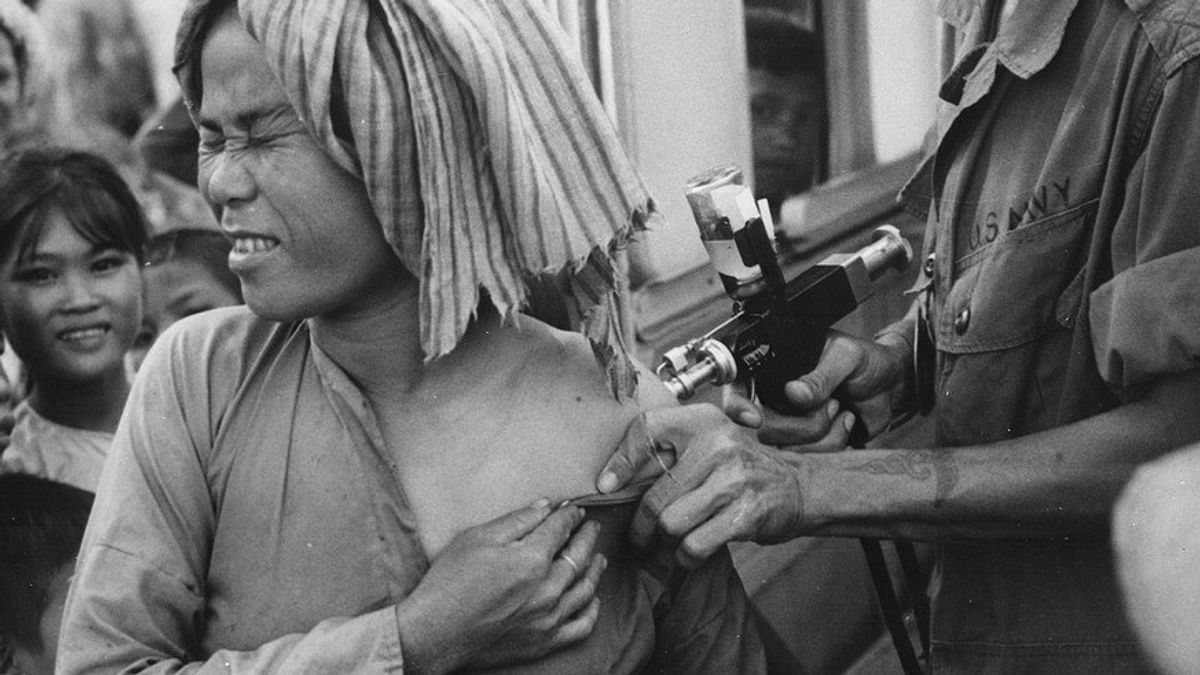JAKARTA - Recently, the world has been shocked by the corona virus from Wuhan, China. As of Tuesday, January 28, there have been 4,474 coronavirus cases found, with 107 dead.
The spread of this epidemic reminds us, not the first time a virus has been feared. Because long ago, there was a virus that threatened mankind, namely the variola epidemic or what is commonly known as smallpox.
Today, smallpox is commonplace in modern times. However, in the past, this plague was feared and was used as a weapon to repel the enemy.
Reported by Historia.id, in the early 14th century, Tartar soldiers pelted their enemies with the corpses of people with smallpox to weaken their opponents. This practice is an example of using smallpox as a biological weapon against the enemy.
Smallpox in the archipelago
Smallpox is thought to have first appeared around 10,000 BC, in an agricultural settlement area in Egypt. Then, from there the disease was brought by an Egyptian merchant to India and Persia. Until this epidemic spreads to all corners of the world, including Indonesia.
Incidents that made the smallpox epidemic spread quickly, including during the crusade in mainland Europe, as well as the practice of slave trade which mostly originated in Africa, where smallpox is an epidemic disease there.
Through this story, it is estimated that smallpox entered the archipelago during the Hindu-Buddhist kingdom, when the trade traffic was busy. At that time, people in the archipelago considered smallpox a curse, and even then smallpox was thought to be spread by a spirit.
Because it is considered scary, people who catch smallpox will be expelled from the village. This happened in several regions in the archipelago, including Aceh, Bali and Sulawesi. This was done because society at that time did not have the knowledge that smallpox was a disease. They believe that smallpox occurs due to spirits.
In 1644, smallpox entered Batavia. At that time, the plague was widespread, but the medicine and medical personnel were not qualified to fight smallpox. In the 18th century, smallpox began to enter Priangan, Bogor, Semarang, Banten and Lampung.
In 1781, a total of 100 Javanese were stricken with smallpox. About 20 of them died, and the most vulnerable were babies. At the end of the 18th century, the infant mortality rate from smallpox in Bogor and Priangan was as high as 20 percent. In fact, in the 1820s, 10 percent of all babies born in Yogyakarta died from smallpox.
The story of smallpox in the archipelago was recorded by Iksaka Banu in a collection of short stories in a book entitled Tea dan Pengianat. In his short story entitled Variona, Iksaka Banu recounts the incidence of the spread of the smallpox epidemic as a background for the story.
He tried to reopen the veil of history that the smallpox epidemic (variola) had been an angel of death since the 14th century, during the Dutch East Indies era.
At that time, the areas of Ternate, Ambon and Bali were the areas that lost the most lives due to smallpox. In Bali alone, the death toll was up to 18,000 by the end of 1871.
When smallpox broke out in many areas in the archipelago, the colonial government was moved to eradicate it by administering regular vaccines and established the Javanese Doctor School in Batavia in 1851. This school was known as STOVIA.
Unfortunately, due to a shortage of medical personnel and lack of funds, vaccinations are not evenly distributed. So that smallpox was still a frightening specter in the archipelago until the 1950s.
The English, Chinese, Japanese, Arabic, and French versions are automatically generated by the AI. So there may still be inaccuracies in translating, please always see Indonesian as our main language. (system supported by DigitalSiber.id)









